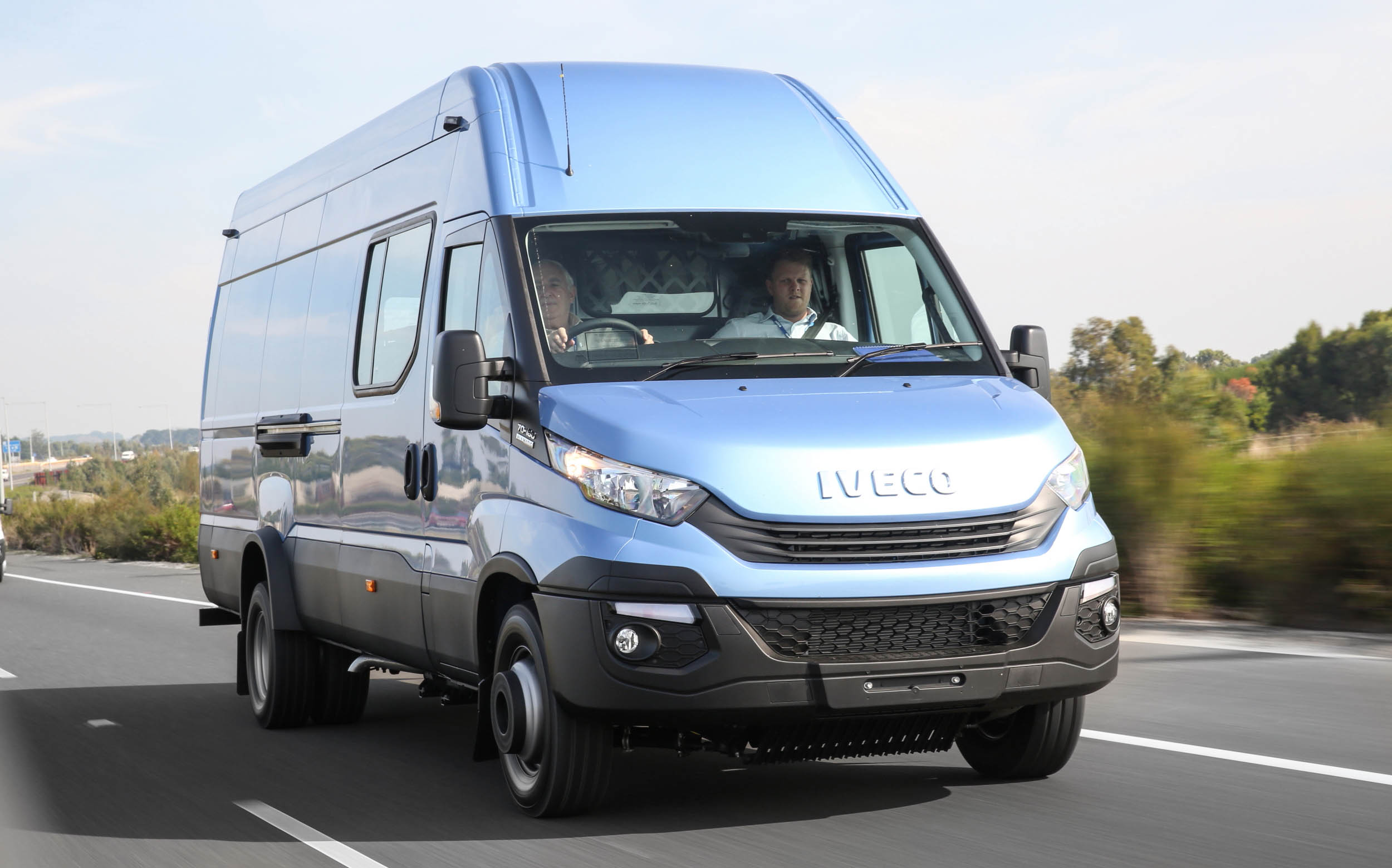The latest Eurocargo raises the safety benchmark with a range of innovative features not normally seen in this segment
Iveco’s recent release of a Euro 6 version of the medium-duty Eurocargo and a couple of smart additions to the increasingly popular Daily line-up leave no doubt that the lighter commercial vehicle classes will continue to be an intense focus for the European conglomerate.
Previewed for the first time at Iveco’s expansive Dandenong (Vic) headquarters, the latest Eurocargo and Daily models further extend the brand’s desire to be many things to many people.
Yet while the medium-duty business hasn’t been a particularly happy hunting ground for Iveco, company executives say the latest Eurocargo raises the safety benchmark with a range of innovative features not normally seen in this segment, especially amongst its Japanese competitors.
For starters, the new Eurocargo with its distinctive cab design has the standard stopping power of front and rear disc brakes with ABS anti-lock as well as an anti-slip regulator (ASR), electronic stability program (ESP), hill-hold function, driver’s airbag and daytime running lights.
Pushing the safety mantra even higher is an advanced emergency braking system (AEBS) using radar technology to measure the distance to a vehicle in front and if necessary, applying the brakes to prevent or at least minimise impact with another vehicle.
All 4×2 rigid configurations, the three models in the Eurocargo Euro 6 line-up are the ML120, ML160 and ML180 with respective gross vehicle weight ratings of 12, 16 and 18 tonnes, and each available in day cab, sleeper (with a high roof option) and crew cab layouts.
Powering all versions is Iveco’s latest 6.7 litre ‘Tector 7’ turbocharged six cylinder engine, using high pressure common-rail fuel injection to produce peak outputs in the ML120 of 250hp (185kW) and 627ft-lb (850Nm) of torque, and 280hp (206kW) and 738ft-lb (1000Nm) in ML160 and ML180 models.
The Tector 7 achieves Euro 6 emissions compliance without requiring any EGR (exhaust gas recirculation) input. Instead, the engine uses what Iveco calls its ‘Hi-SCR’ selective catalytic reduction system combined with a passive diesel particulate filter, or DPF.
The ‘passive’ tag simply means no driver involvement is required for regeneration of the particulate filter.
Other reported attributes of the Tector 7 engine are generous oil change intervals up to 80,000 kilometres and an electronically-controlled, two-speed electro-magnetic engine fan which is automatically engaged or disengaged.
Coupled to the engines is the choice of a ZF nine-speed overdrive manual transmission with a dash-mounted gear shift or Allison’s S3000 five-speed automatic.
There has also been a major make-over on the inside with Iveco citing a quality Isri suspension seat for the driver, practical placement of all controls and switchgear, a linear dashboard design featuring an electronic anti-glare instrument panel, and a relatively unobtrusive engine tunnel allowing the driver to move easily from one side of the cab to the other.
Underneath a chassis designed to make body fitment for up to 14 pallets as simple as possible, the new Eurocargo models ride on a combination of parabolic springs on the front and electronically controlled air assemblies under the rear.
The Euro 6 Eurocargo will be sold alongside existing Euro 5 models which in due course will adopt the new cab exterior design and many of the new model’s interior appointments.
 |
|
High volume Daily van has up to 19.6 cubic metres of cargo space.
|
Continuing the Euro 6 push is a new high volume Daily van which, like the new Eurocargo, uses SCR for emissions compliance and will be sold alongside its current Euro 5 siblings.
With a hefty gross vehicle mass (GVM) rating of seven tonnes on a long 4100mm wheelbase, this version of the highly successful Daily is available in cavernous load capacities of 16, 18 and 19.6 cubic metres.
Iveco is in no doubt the latest Daily represents a viable alternative to pantech-bodied light trucks and according to Iveco Australia and New Zealand product manager, Marco Quaranta, “… is the only van available in the Australian market with a seven tonnes GVM and provides up to 4 tonnes of payload.
Under the snout is a revised 3.0 litre turbo diesel four cylinder engine producing 180hp and 430Nm of torque.
Transmission choices are a six-speed synchromesh double overdrive manual, or Iveco’s slick eight-speed full automatic.
Additionally, safety is further enhanced with an optional lane departure warning system.
Maintaining the momentum, the versatile Daily is also the platform for an impressive minibus range also due later this year, comprising three models.
All models are powered by Iveco’s Euro 6 four cylinder ‘Unijet’ common rail engine delivering 170hp (125kW) and 400Nm of torque through the same eight-speed fully automatic transmission used in the new high volume van.
Smallest of the three models is the 11-seat (plus driver) ‘Shuttle 12’, a unit with a GVM of 4.5 tonnes built on a 3520mm wheelbase and providing standing height of 1820mm.
Then there’s the ‘Shuttle 16’ based on a longer 4100mm wheelbase and seating for 16 occupants plus the driver. GVM for this derivative is 6.1 tonnes while standing room is also 1820mm.
Offering the same seating capacity is the premium ‘Executive 16’ with a 6.5 tonne GVM and 2010 mm of standing room.
Along with standard internal luggage racks, all minibus models have a generous rear overhang to provide an extensive area behind the last row of seats for additional passenger baggage.
In the safety department, all models have front and rear disc brakes with ABS and electronic stability program, and Iveco’s extensive ESP9 safety package.
Read the full feature on Iveco’s new Eurocargo and Daily models in the July edition of ATN.


